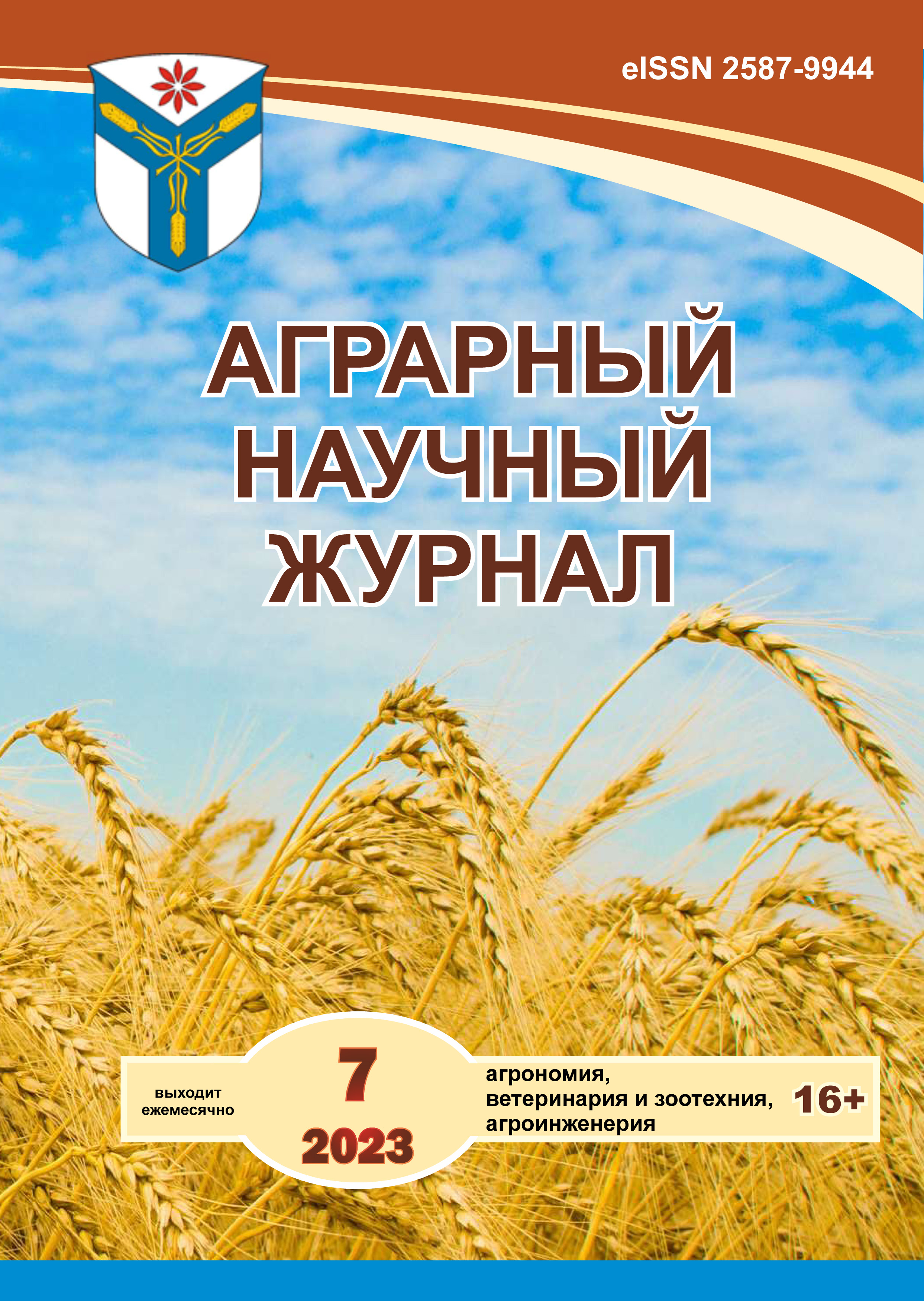The effect of the zinc preparation "Asparzink" on the morphological parameters of pheasant blood
DOI:
https://doi.org/10.28983/asj.y2023i7pp77-80Keywords:
Asparzink, pheasants, zinc, blood, chelated compounds, leukocyte formulaAbstract
The article presents the results of studies on the effect of the drug "Asparzink" on the morphological parameters of pheasant blood. For the prevention of zinc deficiency conditions, various additives have been often used recently. One of them is "Asparzink", which includes zinc asparginate. However, its effect on blood morphological parameters has not been fully established. The aim of the work was to study the effect of the zinc preparation "Asparzink" on the morphological parameters of pheasant blood. The studies were carried out on pheasants of the North Caucasian breed. Pheasants were kept in the conditions of the GBU of JSC "Directorate of Southern PLO and GOH "Astrakhan". Hematological parameters were determined on Mindray BC-2800 Vet (China). It was found out that the studied compound has a pronounced positive effect on the morphological parameters of peripheral blood, which is expressed by an increase in the number of red blood cells by 18.7 and 19.3%, hemoglobin levels by 10.7 and 14.6%, average volume of red blood cells by 12.0 and 13.8%, hematocrit levels by 13.9 and 19.4% when administered at a dose of 1 and 2 mg/kg, respectively. An increase in the number of monocytes and basophils was determined. The most effective dose is 2 mg/kg of body weight.
Downloads
References
Зирук И. В. Влияние хелатов на динамику накопления минералов в организме подсвинков // Ветеринарный врач. 2019. № 5. С. 10–15.
Влияние органических форм микроэлементов на биохимические показатели крови супоросных свиноматок / В. П. Надеев [и др.] // Известия Нижневолжского агроуниверситетского комплекса: наука и высшее профессиональное образование. 2012. № 3(27). С. 150–155.
Влияние введения цинка на его содержание в тканях лабораторных животных и активность антиоксидантных ферментов в сыворотке крови при физической нагрузке / А.. Скальный [и др.] // Казанский медицинский журнал. 2015. Т. 96. № 5. С. 862–868.
Шейбак В. М., Павлюковец А. Ю. Влияние однократного введения цинка аспартата на спектр свободных аминокислот плазмы крови // Актуальные проблемы медицины: материалы ежегодной итоговой науч.-практ. конф. Гродно, 2019. С. 608–611.
Шейда Е. В. Изменение морфологических и биохимических показателей крови крыс при дополнительном введении в рацион аспарагината цинка // Животноводство и кормопроизводство. 2020. Т. 103. № 2. С. 100–113.
Bjorklund G., Aaseth J., Skalny A.V. Interactions of iron with manganese, zinc, chromium, and selenium as related to prophylaxis and treatment of iron deficiency // J. Trace Elem. Med. Biol. 2017. Vol. 41. P. 41–53.
Carter R., Kupka R., Manji K. Zinc and multivitamin supplementation have contrasting effects on infant iron status: a randomized, double-blind, placebo-controlled clinical trial // Eur. J. Clin. Nutr. 2018. Vol .72(1). P. 130–135.
Downloads
Published
Issue
Section
License
Copyright (c) 2023 The Agrarian Scientific Journal

This work is licensed under a Creative Commons Attribution-NonCommercial-NoDerivatives 4.0 International License.








